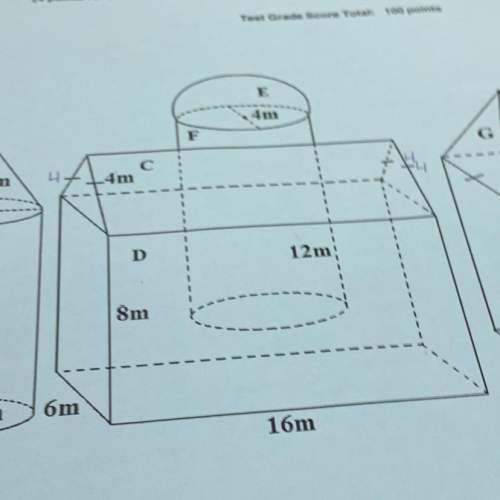
Mathematics, 24.08.2019 15:30 veronica25681
If y ¤ x = y2x for all positive integers, then (3 ¤ 4) ¤ 2 =

Answers: 1


Other questions on the subject: Mathematics

Mathematics, 22.06.2019 02:30, avagymnast421
Kate is arranging new furniture in her rectangular sitting room. she has mapped the arrangement on a coordinate pane. a, b and c represent the sofas, v1 and v2 are decorative vases and aq the aquarium. find the distance between v1 and the aquarium. any body you
Answers: 3

Mathematics, 22.06.2019 04:00, Goldenstate32
If the equation of a line containing the midsegment of a triangle is y = -1/4x -11, what is the slope of the triangle side that is opposite the midsegment (the one not touching it). explain how you know.
Answers: 1

Mathematics, 22.06.2019 04:40, chl75
The discrete random variables x and y take integer values with joint probability distribution given by f (x, y) = a(y−x+1) 0 ≤ x ≤ y ≤ 2 or =0 otherwise, where a is a constant. 1 tabulate the distribution and show that a = 0.1.2 find the marginal distributions of x and y. 3 calculate cov(x, y).4 state, giving a reason, whether x and y are independent. 5 calculate e(y|x = 1).
Answers: 2

Mathematics, 22.06.2019 05:20, samariahopkins4
Customers are used to evaluate preliminary product designs. in the past, 93% of highly successful products received good reviews, 51% of moderately successful products received good reviews, and 14% of poor products received good reviews. in addition, 40% of products have been highly successful, 35% have been moderately successful and 25% have been poor products. round your answers to four decimal places (e. g. 98.) what is the probability that a product attains a good review? (b) if a new design attains a good review, what is the probability that it will be a highly successful product? (c) if a product does not attain a good review, what is the probability that it will be a highly successful product?
Answers: 1
You know the right answer?
If y ¤ x = y2x for all positive integers, then (3 ¤ 4) ¤ 2 =...
Questions in other subjects:

Mathematics, 13.01.2020 18:31



Social Studies, 13.01.2020 18:31


Physics, 13.01.2020 18:31

Physics, 13.01.2020 18:31







